Senior gardening: learn more about the benefits of a therapeutic garden
A garden or a little piece of nature to tend to is all you need!

Ever wondered why so many seniors take up gardening after they’ve retired? Aside from having the luxury of more spare time, tending to a garden or simply enjoying being in contact with nature brings several health benefits that can help seniors feel better, avoid stress and anxiety and live a fuller life.
If you think about it, it actually makes a lot of sense: a garden has all the elements that trigger your senses – you can smell the flowers and see their vibrant colours, feel the sun, wind or grass, hear the bees and even taste what you´ve grown. Perhaps most importantly, gardening keeps you moving and gets you out of the house. Are you starting to see the benefits?
Moreover, tending to a garden, especially after you´ve retired, can give you a sense of purpose and help fight depression. According to a research report written by McCaffrey R, W and Hansom C, “Millions of people experience depression every year, including the elderly, where it can be particularly debilitating as it affects physical, mental, and social functioning. Access to the outdoors and increased sunlight might help treat depression, as well as improve morale, self-confidence, cooperation, social interaction, and physical functioning (…).” It’s no wonder Therapeutic or Healing gardens exist, or that they’re very much appreciated by the people who use them.
Stannah invites you to explore the wonderful world of working in the garden. We’ll examine how a garden can be used for healing and all the benefits it can bring to your life. And who knows, maybe this will be your next DIY garden project!
What is a therapeutic garden?
Aren’t all gardens therapeutic? Being in a well-maintained or beautiful garden may indeed relieve stress or promote a feeling of joy; however, when we talk about a “therapeutic garden” or a “healing garden”, we´re referring to green spaces that were specifically designed to be emotionally beneficial and brighten up areas otherwise lacking in natural beauty (for example hospitals, nursing homes or other healthcare facilities). These gardens are specifically designed for their healing and restorative qualities. Everyone can enjoy a therapeutic garden, whether they’re young or old, sick or healthy. How can we make our own gardens more therapeutic?
“To plant a garden is to believe in tomorrow” Audrey Hepburn
According to Clare Cooper Marcus, an emeritus professor in landscape architecture at the University of California, Berkeley, “Spending time interacting with nature in a well-designed garden won’t cure your cancer or heal a badly burned leg. But there is good evidence it can reduce your levels of pain and stress—and, by doing that, boost your immune system in ways that allow your own body and other treatments to help you heal.” Seniors often suffer from rheumatic conditions that lead to pain and discomfort. Anxiety and fear of falling can raise stress levels. And let’s face it, can’t we all benefit from an extra immune system boost? Tending a garden, or even just being in one can help your overall wellbeing. Let’s look at the elements that make up a healing garden, what types exist and what you can adopt for your own.
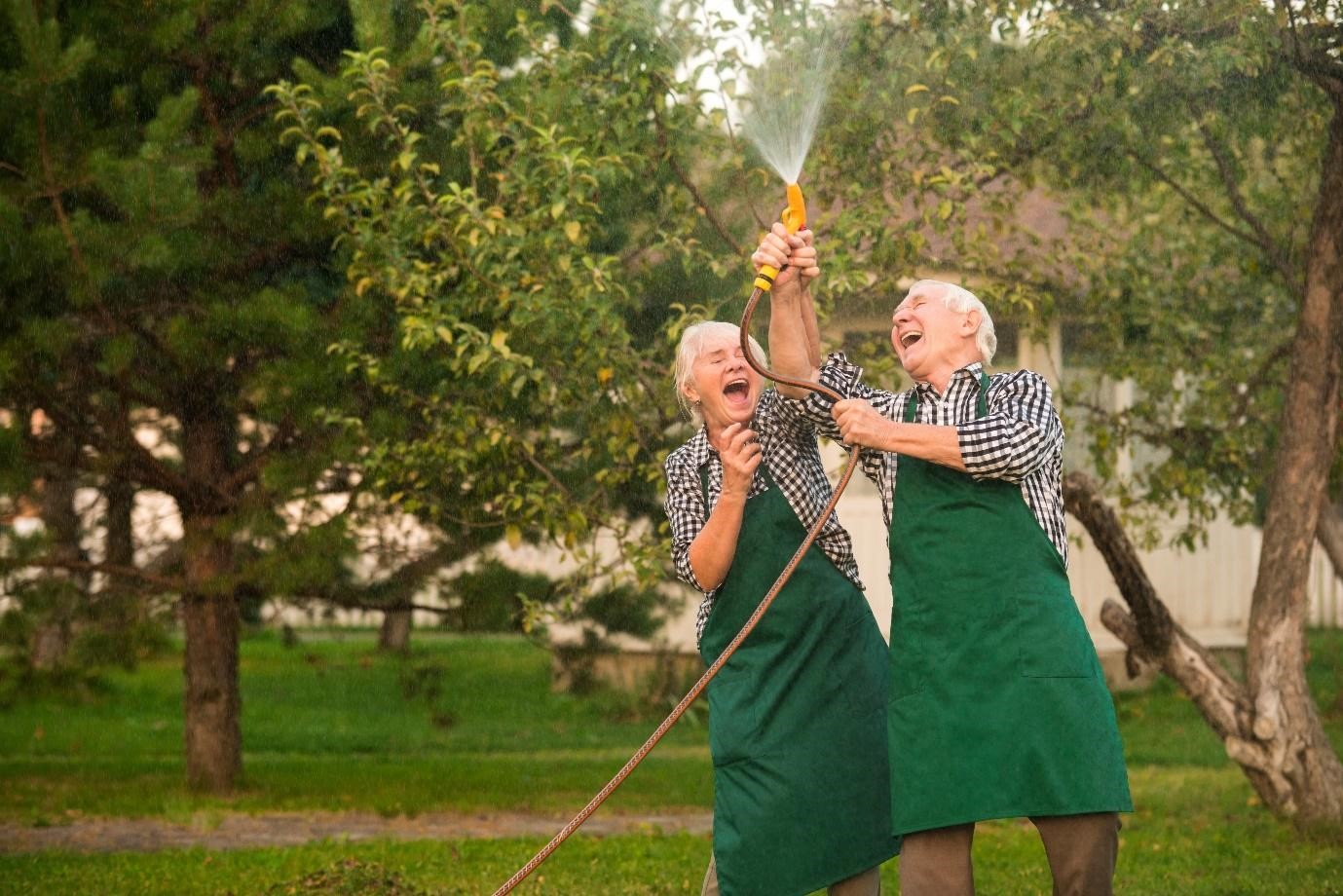
Healing gardens – a closer look.
Wikipedia defines a therapeutic garden as: “an outdoor garden space that has been specifically designed to meet the physical, psychological, social and spiritual needs of the people using the garden as well as their caregivers, family members and friends”. There is actually a distinction between a healing and a therapeutic garden. A healing garden includes all aspects of nature; you´ve got green plants, a water feature, flowers and anything else that connects us to the elements. A therapeutic garden can be considered a subcategory and is built specifically to be part of a (holistic) treatment. Besides the elements mentioned here, what else can we find in these gardens? The Scientific American’s article – “ Nature that Nurtures” suggests:
- Ornamental trees.
- Hose bib (water source).
- Vegetable plants /fruit trees.
- Easy entry – make the garden easily accessible.
- There needs to be plenty of sunlight and a place for shade.
- Plants that attract birds and butterflies (therefore engage multiple senses).
- Seating, like benches and easy-to-move chairs (which will facilitate private conversation).
- Pathways – enable less mobile users to use the garden too, for example if you have a walker.
- A water feature – be careful to choose something that soothes you, a dripping tap, for example, doesn’t.
Some of the elements listed above are a bit more difficult to adopt for a smaller garden, but they can always serve as inspiration. Start by asking yourself these two questions: what are you looking for in a garden? And what do you want to gain from it?
Gardening and mental health
We can already tell that gardening and being in touch with nature has a positive effect on people´s health. It has positive physical effects because you´re outside, moving around in the fresh air, but is there proof that gardening also leads to mental health benefits?
Believe it or not, gardening has been used as a form of therapy since the 1800s! Humans have always suffered from stress, depression and negative self-esteem. As we grow older, these feelings stay with us. Hopefully, we get a bit better at managing them, but we can all use a helping hand when it comes to our wellbeing. Let´s take a look at how Mother Nature helps us overcome these struggles.

Garden therapy, and how it can help you.
Several sources show us what working in the garden can do for our overall health. We found Psychology Today’s article on gardening and mental health very informative, so we´ve listed the main benefits they found for you to think about as you design your own therapeutic garden.
Gardening gives you:
- A sense of responsibility, self-esteem and accomplishment. Plants really do respond to care. Knowing that living elements can´t go on without you gives you a true sense of responsibility. The garden depends on your time and care but it gives you so much in return. Seeing what you´ve sown, grown and nurtured will boost your self-esteem and therefore your sense of accomplishment.
“Flowers are restful to look at. They have no emotions or conflict”Sigmund Freud
- A connection to the world around you. Sometimes we all need a reminder that the world doesn’t revolve around us. Working in your garden will make you feel connected to the earth, to nature, it will open your eyes and remind you that you are part of it all. It will make you feel more centered, which is essential when you´re struggling with the blues.
- Happy Hormones. Working in the garden will mean using some energy, which means your body will release serotonin and dopamine – happiness hormones. As well as this is the effect of having done physical work during the day. You feel happy to go to bed at night and tired enough to drift into a peaceful sleep.
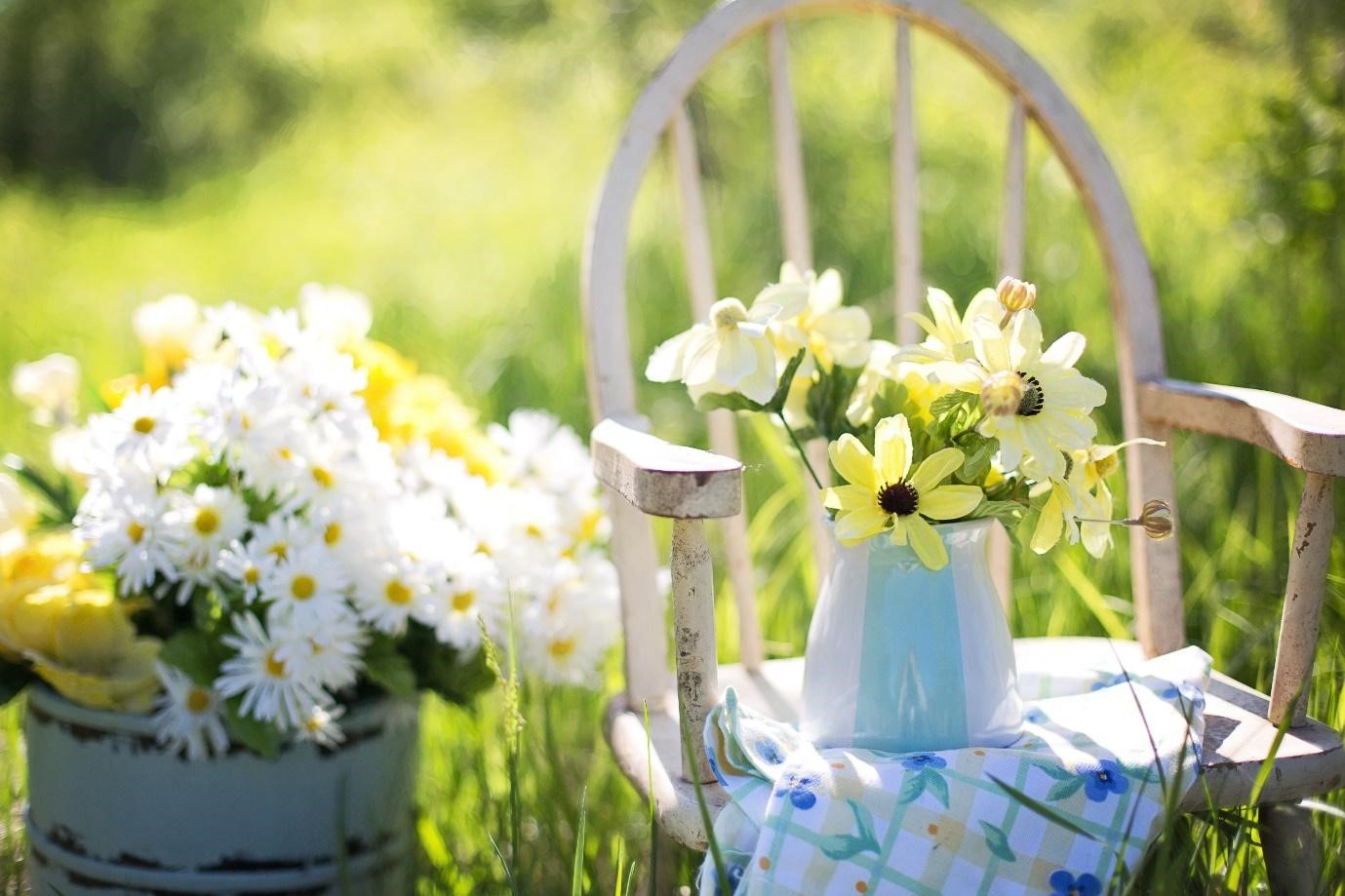
- Relaxation. “Flowers are restful to look at. They have no emotions or conflict” said the father of Psychoanalysis – Sigmund Freud. In your garden you are in your own world. You do not need to worry about anything or anyone. No pressures, no deadlines just you and your plants. You can let go of things that are worrying you during the day and enjoy peace of mind.
- More contact with others. Gardening is something everyone enjoys. Spending an afternoon in the garden with your friends and family is one of the most enjoyable activities you can be a part of. Gardening or picking the fruits of your labour with your children and grandchildren is a precious memory in the making.
- The chance to blow off some steam. Anyone who has ever worked in a garden knows that sometimes it’s not all beautiful flowers and humming birds. It can be hard work! Luckily, you don’t need extensive hard labour to keep your garden nice and neat – and you can make the most of the higher energy stuff to blow off some steam. Picture yourself sitting in a comfortable lawn chair while you give that hedge a piece of your mind with some shears. And if you do need some work done that’s a bit out of your comfort zone, well that´s why you have those strong, young grandkids, right?
These are some of the main reasons why gardening has such a positive effect on one´s wellbeing, but there are plenty more. Try gardening for yourself to see just how good it makes you feel!
Which aromatic plants should you plant, and why?
As we’ve mentioned, there are some elements that should be included in your garden, like flowers and plants that attract butterflies and birds. This is where you can let your imagination run wild, think about what kind of smells and colours you would like to be surrounded by. You also need to consider what grows well in your climate. You might love the idea of a beautiful lemon tree or a tomato plant for example, but be realistic. If you live in The Netherlands, for example, a lemon tree might not be the best match, but a beautiful apple tree could be just perfect. Let´s take a look at the possibilities – then you just have to decide what you want and what´s doable for you.
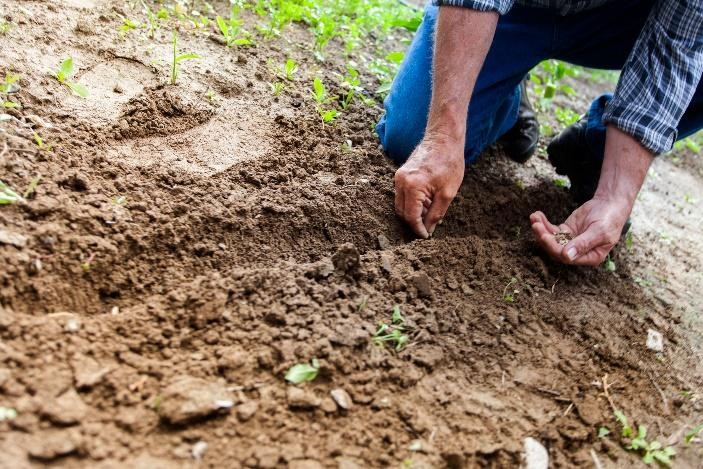
Aromatic and herbal plants.
We´ve selected some of our favourites here at Stannah. Of course, there are a lot of options out there, but use our selection as a starting point – we chose them based on the aesthetic beauty of the plant, its aroma and its potential health benefits.
Please note that these suggestions can be used for simple things like to make herbal tea or to add flavour to a salad, but unless you´re a professional herbalist, you should not venture into planting and growing herbal plants with medicinal properties. If you don´t know what you´re doing, they can do more harm than good.
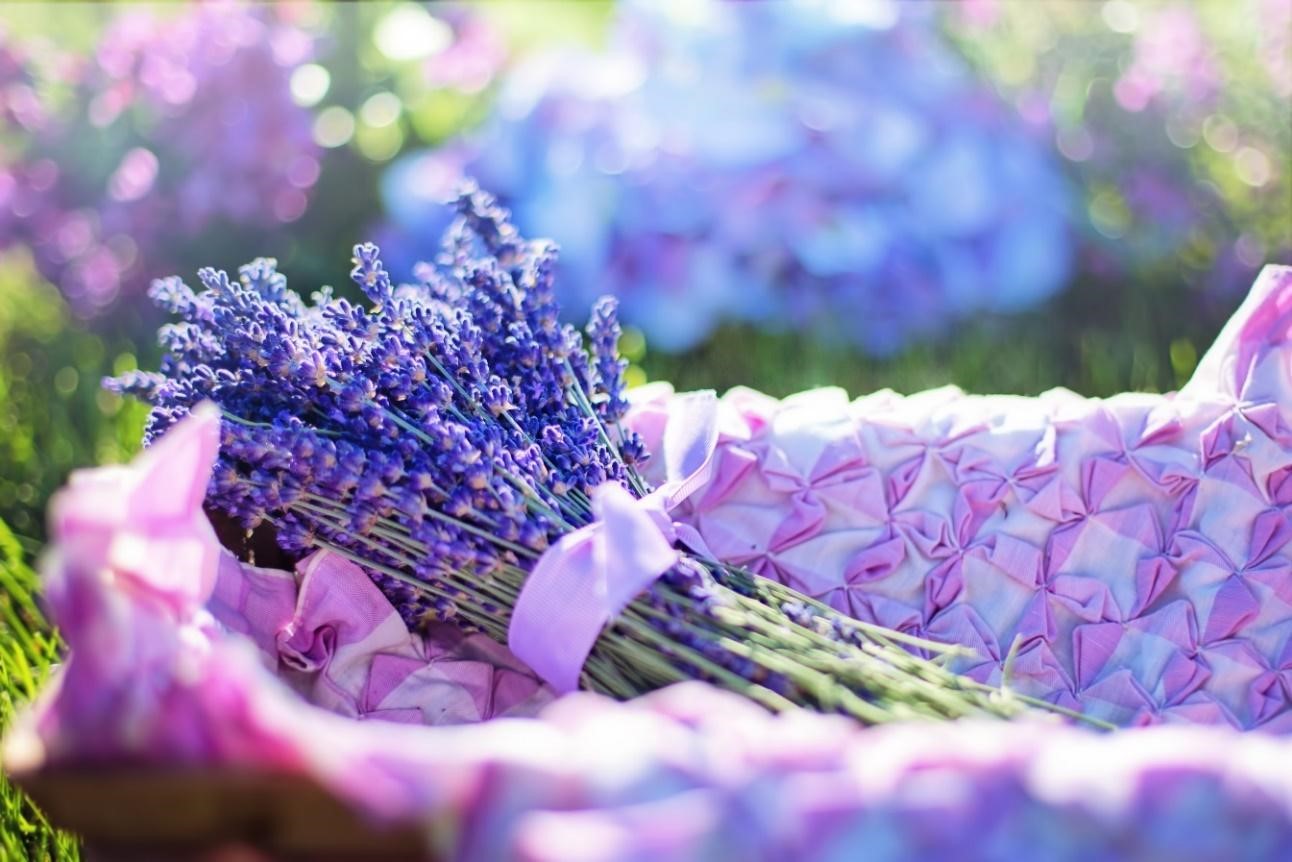
- Lavender produces calming, soothing and sedative effects when inhaled. It can be used to make tea, soap or for scenting you drawers.
- (Pepper)Mint is one of the oldest herbs used by man, it has mild analgesic properties, calms upset stomachs, alleviates stomach pains, prevents nausea and cools skin.
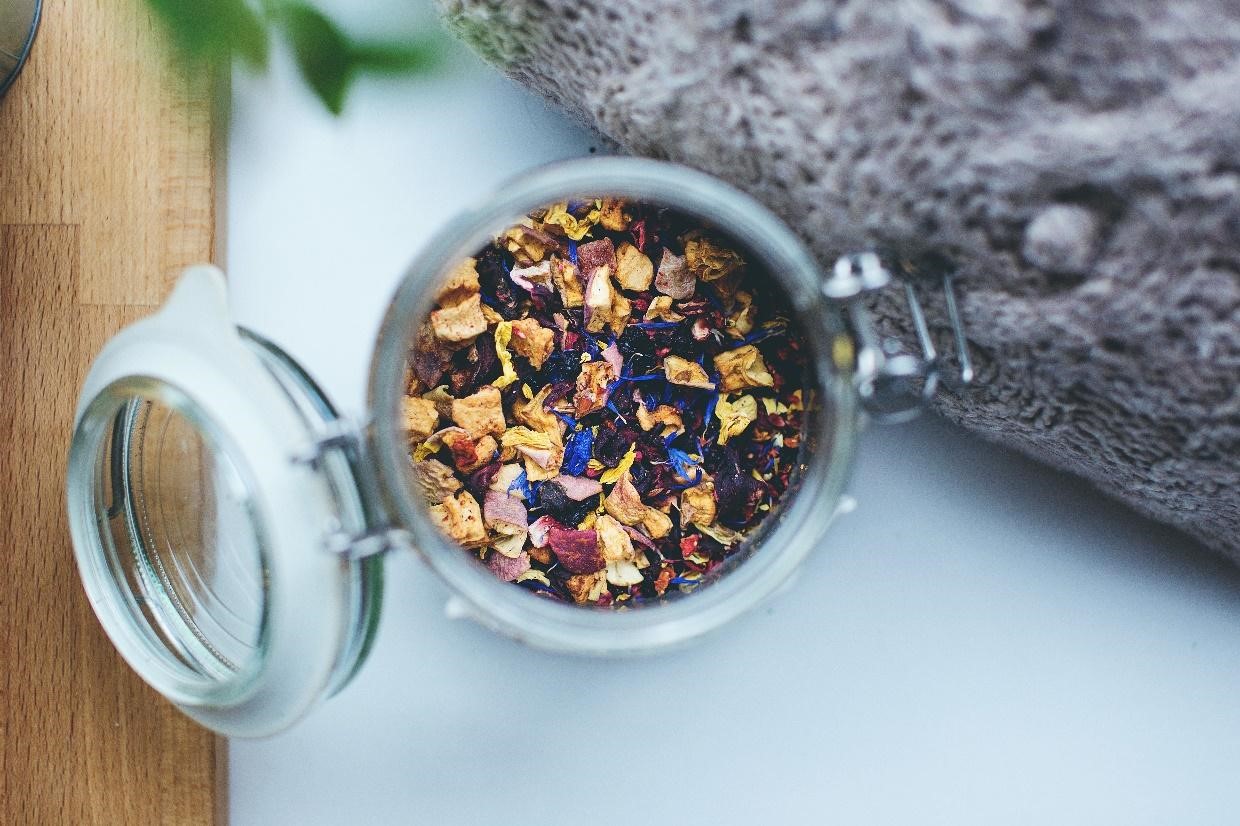
- Chamomile has a soothing effect when made into tea. You can also gargle with it to relieve mouth ulcers or cool infected skin.
- Lemon balm has a pleasant, fresh smell. It is a really aromatic plant that will spread easily and bring fragrance your garden.
- Jasmine means “Fragrant Flower” in Persian and is widely used as part of aromatherapy. It can be used as an anti-depressant, aphrodisiac or to induce sleep. It’s also used torestore skin moisture and elasticity, reducing the appearance of wrinkles.
- Calendula is a beautiful golden flower that will light up your garden, it’s an edible flower that can be used to treat skin problems when made into a poultice, and help relieve digestive problems.
- Rosemary is a very fragrant plant, which is widely used in cooking and is a great addition to your garden. It is a good source of iron, calcium and vitamin B-6.
- Sage has green leaves that are often used in cooking. It can encourage appetite and prevent flatulence. It’s found to be neuroprotective and it´s even used to treat Alzheimer´s, dementia and depression. When inhaling an infusion, it can help with respiratory problems and lessens menopausal symptoms.
- Echinacea this pretty pinkish flower is very popular during flu season, as it strengths your immune system and enables the body to fight bacterial and viral infections.
You can get more inspiration and information from Natural Living ideas by clicking here.
Design your garden in such a way that you have your aromatic plants strategically placed to enhance their aromas and their beauty. When it comes to planting vegetables and fruit trees, do a little research and look at what will grow and when you need to sow/plant it. There are specific times of the year that vegetables need to be planted and harvested. You can also try using a planting calendar, which will give you all the information you need on when to sow, plant, harvest etc. If a kitchen garden is what makes you happy then by all means – go for it!
Gardening tools you should use
To make your gardening experience as beneficial and pleasant as possible, you need to use appropriate clothing and tools. Luckily there are a lot of garden tools especially designed for seniors to help you do just that.
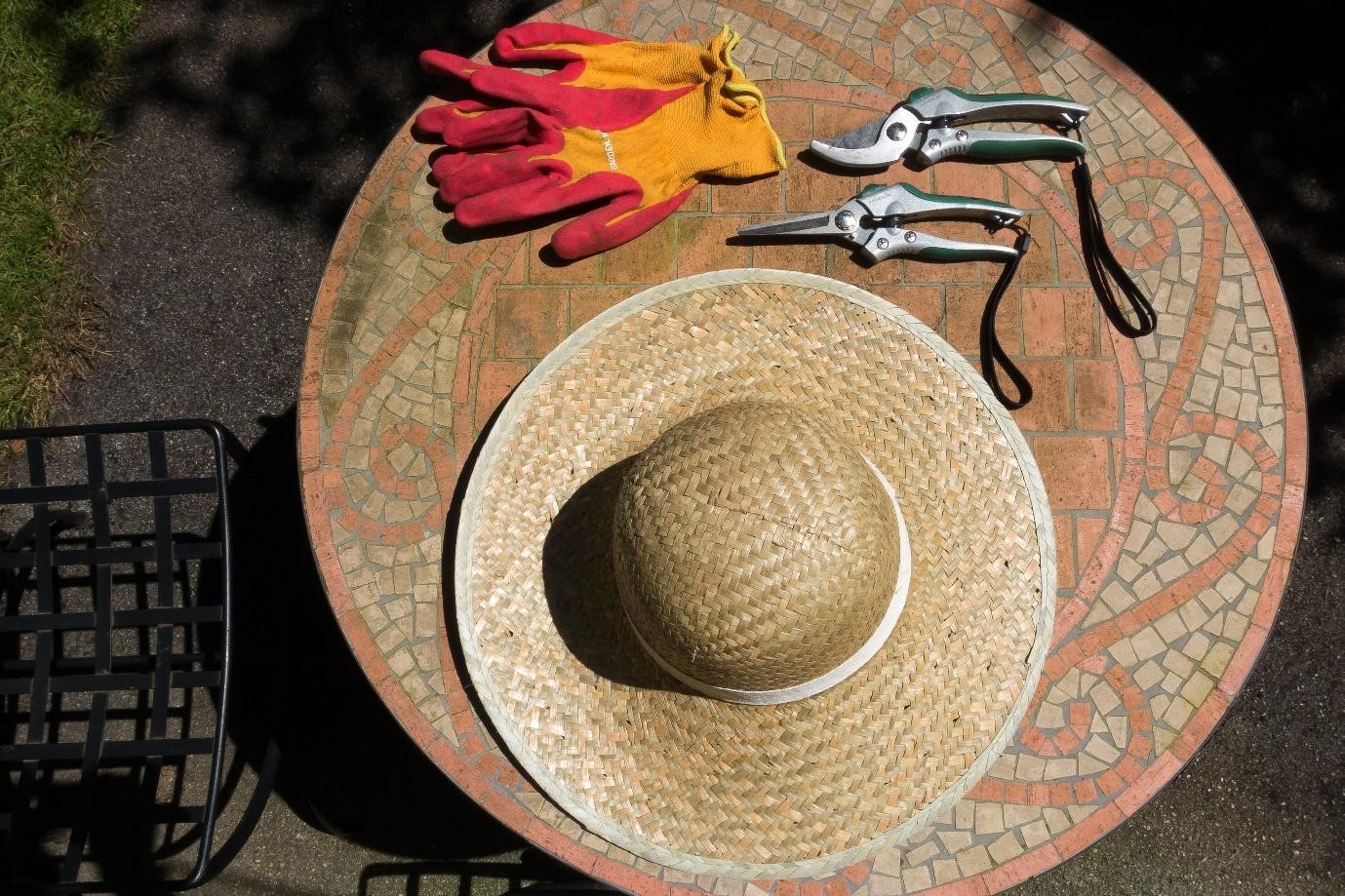
Gardening aids for the elderly.
Clothing: you need to be comfortable and able to move around easily. Remember that you need to protect yourself against the elements. You’ll need:
- A sturdy straw hat, to protect your head and face against the sun or a baseball cap with a broad rim and neck protection.
- A pair of gardening gloves to protect your hands from getting dirty, the sun and any thorns or other possibly harmful weeds like poison ivy.
- An apron to protect your clothes and give you a place to keep smaller tools like scissors – with the added benefit that you can dry your hands on it!
Tools that will help you work in and around the garden include:
- A Garden Kneeler, which is especially handy as it is a combination of a knee mat and a robust standing aid. Choose one with a soft foam pad as you will use it a lot. It can even function as a seat when needed, as the structure around it will help you provide support when you need to get up again.
- A Garden Litter Picker, can also come in handy. It will help you to pick up litter that has found its way into your garden, or simply something that you’ve dropped. The picker is so useful because it means that you do not need to bend over as much.
- A Weeder
- A trowel
- A garden fork
- A hoe
- A scooper
- A spade
- A pruner
Easy-to-handle versions of all of these tools are available. Especially designed for senior gardeners, they have longer handles, non-slip grips with arm supports and are lightweight. Ask your local garden centre for more information about these tools, and now you have some ideas for your next birthday or Christmas presents!
Gardening and reduced mobility. Where there’s a will, there’s a way!
We at Stannah understand that access to your backyard, front garden or any outdoor area could be difficult if you need to use stairs to get to them. It may be a challenge to embrace this new form of therapy, but as the saying goes, “Where there’s a will, there’s a way”. Take a look at our Outdoor stairlift. It could be the most important tool of all for you. It will enable you to effortlessly go down to your garden or patio, and maybe even more importantly, bring you back up the stairs after a productive gardening session, and even carry any groceries or other items you might have with you. The stairlift has been designed to do exactly what the name suggests: get you outside! So it will work all year round, even in sub-zero temperatures or during a heavy rainstorm. No worries, as long as you can get to your beloved garden, it’s all good!

As Clare Ansberry wrote in her book ‘The woman of Troy Hill (…)’ “Gardens and flowers have a way of bringing people together, drawing them from their homes”. Venture into the magical world that Mother Nature has given us, have fun and live every day to the fullest!

 USA
USA